The MSI X299 Gaming M7 ACK Motherboard Review: Light up the Night
by Joe Shields on March 5, 2018 10:00 AM EST- Posted in
- Motherboards
- MSI
- ATX
- M.2
- USB 3.1
- RGB
- X299
- Basin Falls
- Skylake-X
- Kaby Lake-X
- i9-7900X
BIOS
The Gaming M7 ACK's BIOS should look familiar to many who have used any MSI boards recently. The Click Bios 5 is set up exactly as we have seen the others, with an EZ Mode being the landing page. Since the M7 ACK is part of the Enthusiast gaming segment, the BIOS receives the red and black theme treatment we are familiar with.
The EZ Mode portion of the BIOS is designed to be informative as well as allowing editing of a few options. Across the top we see the Game Boost button for one-touch (or twist of the onboard button) overclocking. Each setting will implement a pre-defined overclocking profile. For our CPU, the highest setting, 11, and could send the i9-7900X to 5 GHz on a single core. Next to the Game Boost button is another button to enable XMP profiles. To the right of it is an informative dashboard showing the CPU, motherboard, memory size, Vcore, BIOS version, and boot order (can change this here by dragging the icons around).
The advanced version of the BIOS 'unlocks' the rest of the features. In typical Click BIOS 5 fashion, we see the informational dashboard still up at the top, with the bottom replaced by several sections:
- Settings - housing many board and system level functions,
- OC - for overclocking,
- M-Flash - to flash the bios,
- OC Profile - save or load BIOS settings,
- Hardware Monitor - for system monitoring and fan control,
- Board Explorer - displaying what is connected to the board.
The settings section includes sub-headings for System Status, Advanced, Boot, Security, and Save and Exit. The Advanced section contains options for PCI Subsystem settings, Intel VROC configurations, USB configuration, Integrated Peripherals section, as well as power management and Windows OS configuration options. In a nutshell, anything you need to edit from OS selection to enabling/disabling onboard functionality should be found here.
The OC section is where users will find all options for overclocking. This section has two available modes: Normal, for the base options, and Expert which expands the available options. Most overclockers can be satisfied with the normal setting, but for more granular control, Expert needs to be selected. Within this section are other subsections such as CPU feature/function control, DRAM control, and voltage options.
The OC Profile section is where users are able to save profiles, either to the BIOS or a USB, as well as load profiles.
The Hardware Monitor section gives users a graphical display of the system status, from the temperatures and voltages of the CPU, to motherboard temperatures, MOSFETs info, chipset info, and M.2/PCIe temperatures. This section also displays information on the fan curves and allows users to create their own custom curve for each header. The board offers hybrid control (PWM or DC) on each of its headers.
The Board Explorer section displays what it attached to the connectors that are on the board. As shown below, the populated DRAM slots, fan headers and PCIe slots are shown. For the Rear IO or SATA ports, these are sub-menus to drill down into what is installed. It can also display temperatures as noted by the thermometer icon located in several locations (VRM, CPU, above the PCI slot, chipset, etc).
Software
MSI includes a driver and software disk with the package. For software, it gives Live Update 6, Mystic Light, Command Center, and more. I installed the basic drivers checked off below without issue, as well as some of the utilities, avoiding free bundled anti-virus.
The Live Update 6 software scans the PC for installed versions of MSI applications and will go out and check for the latest versions at the MSI website. In our case, it did not find anything which needed to be updated from the driver disk.
MSI has an App Manager application that it is a central location/repository for the major MSI software. When installed, the icons change to use color instead of a greyscale. All the applications I had installed launched without issue from here. I am personally not a big fan of these as its just more applications to clog up the taskbar, but, many find its consolidation of applications useful.
MSI's Command Center Application is a Windows-based utility to control and monitor the system. It has the ability to overclock the CPU and change voltages, has the ability to control fans, and has a Game Boost section for implementing one-touch preset overclocking. Accessing the advanced section gives users more options for voltage, DRAM timings, and fan control as well as displaying a 'board explorer' type map monitoring temperatures and fan RPMs. CC is one of the more complete Windows-based applications for this type of functionality.
The Killer Control Center application allows monitoring and manipulating both the wired and wireless networking options on the board. The application has the ability to monitor traffic as well as offer six levels of prioritization for all applications with network traffic. It includes an optional whitelist which prioritizes a set of known applications in different ways, giving priority to latency software first (games, VOIP) and placing downloads as the lowest priority. All unknown connections get given priority 4, which is the same priority as regular web traffic. Users can also decide if certain applications go over wired or wireless, depending on the networks chosen. The KCC also has a Wi-Fi analyzer to view all the Wi-Fi signals it can reach which is helpful for selecting the least busy channels for best throughput.
MSI's Mystic Light application controls all of the RGB LEDs on the MSI X299 Gaming M7 ACK. The application offers control over the LEDs to be synced with 15 different effects, or individually lit up. The application is also able to control any RGB LEDs attached to the board's multiple RGB headers. My only complaint about this software is how it scales with screen size, as it can fill up a 4K UHD monitor pretty easily. I wouldn't imagine a simple RGB controlling application needs to do this.
The MSI X299 Gaming M7 ACK uses dual Realtek ALC1220 codecs, and uses a custom skin on the Realtek based software which matches their Gaming lineup theme of black and red. The software functionality is no different in offering preset sound stages a graphics equalizer, as well as a visual representation of what is plugged into the back and front panels as well as SPDIF.
With the ALC1220 codec, MSI adds another piece of software for audio manipulation called Nahimic. The Nahimic software feels most like an extension to the Realtek software, allowing users to change multiple facets of their sound profile include bass and treble, virtual surround, loudness, and others. These sound profiles are able to be applied by different types of activities such as listening to music, watching a movie, phone calls, or gaming. It is also able to adjust inputs from the microphone and recording as well as including a sound tracker software for gaming which uses an OSD to show where the sound heard in game is coming from.


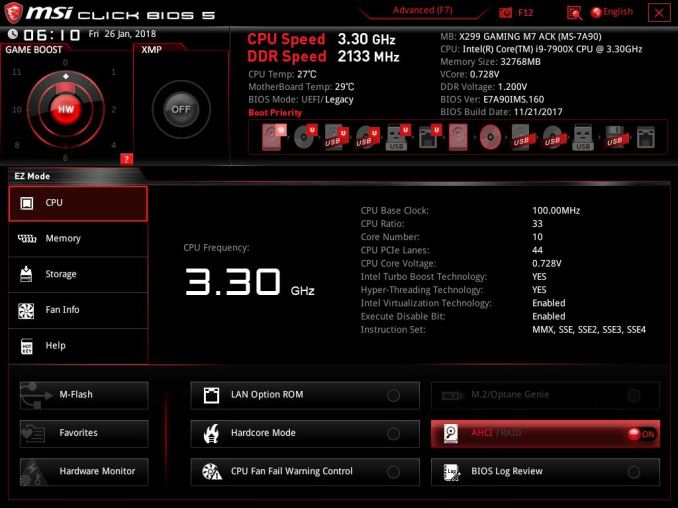
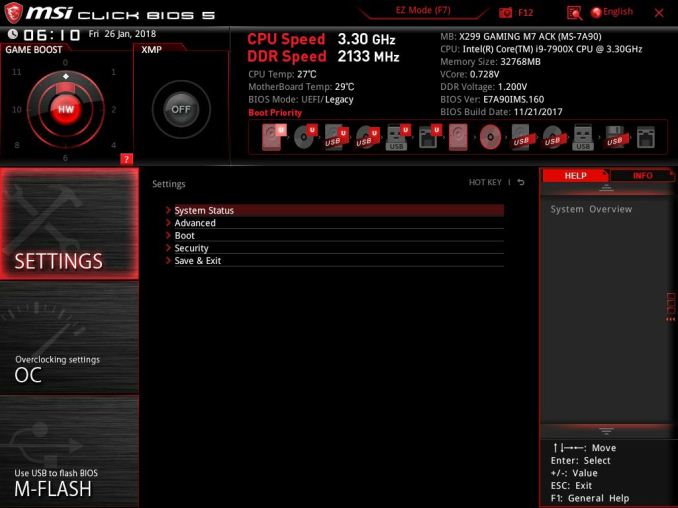
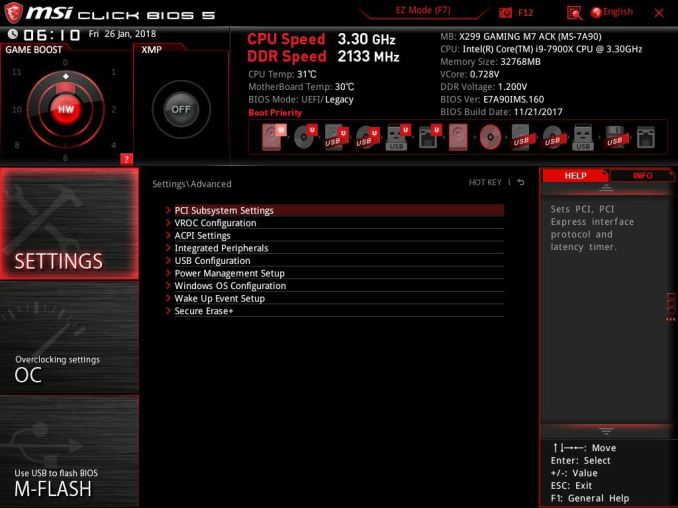
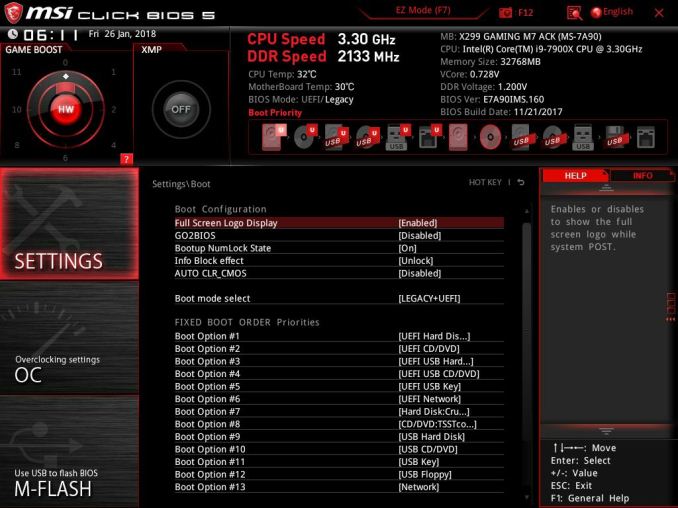
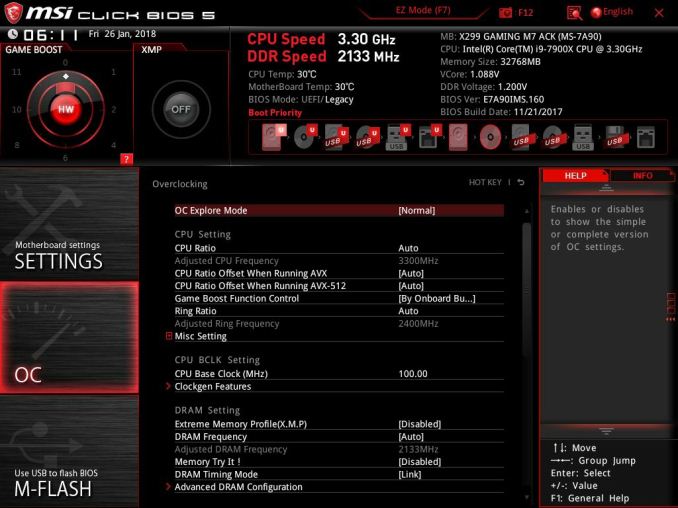
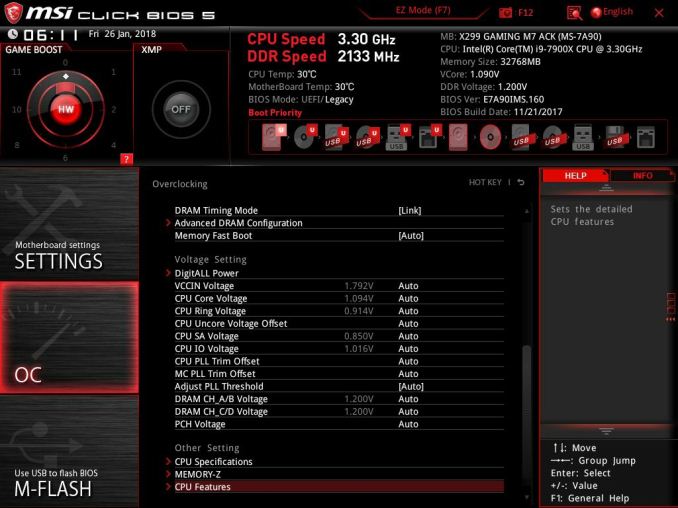
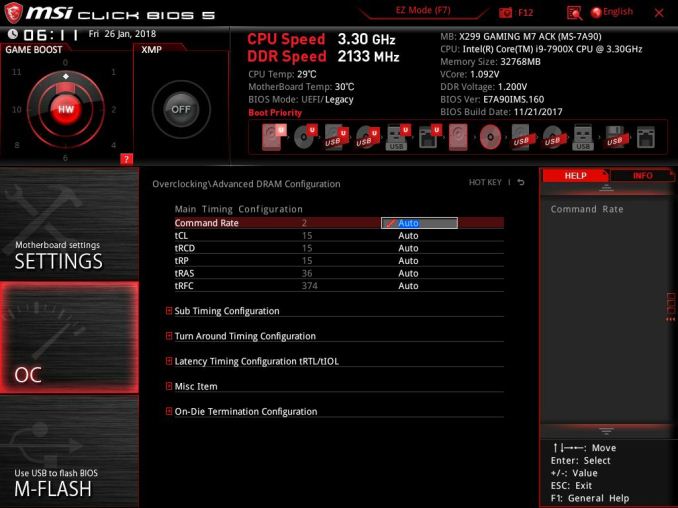
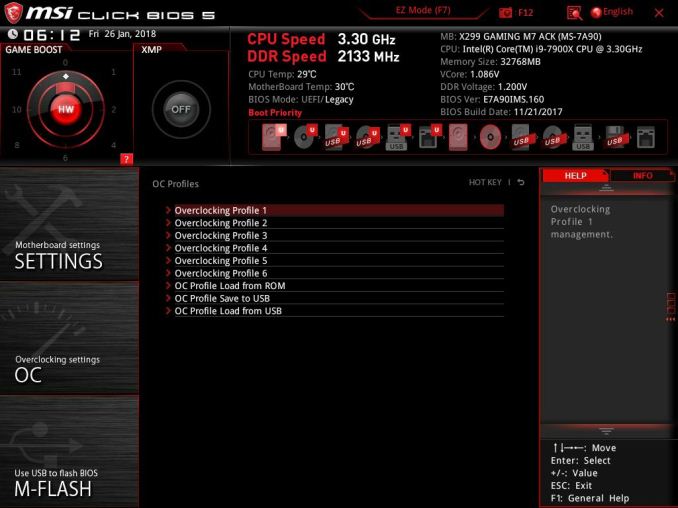
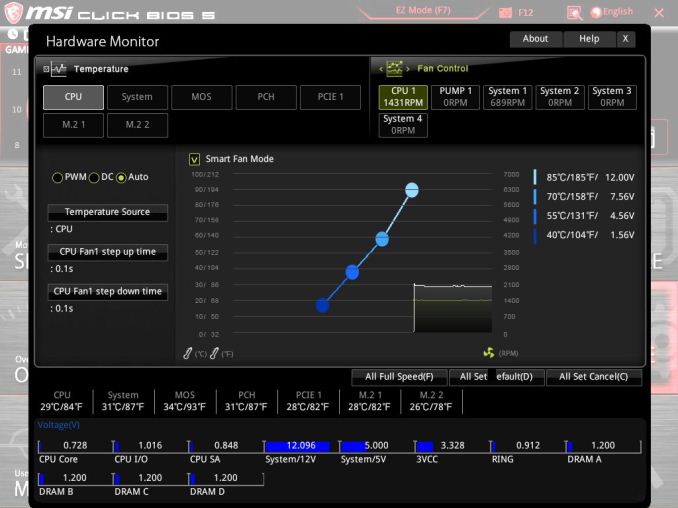
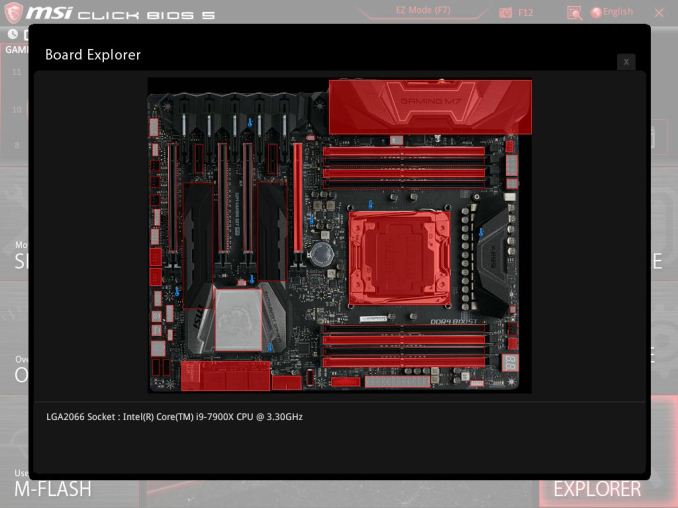






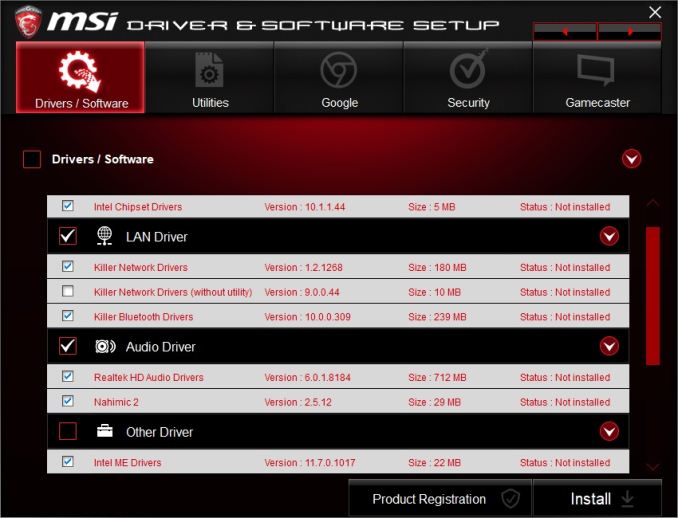
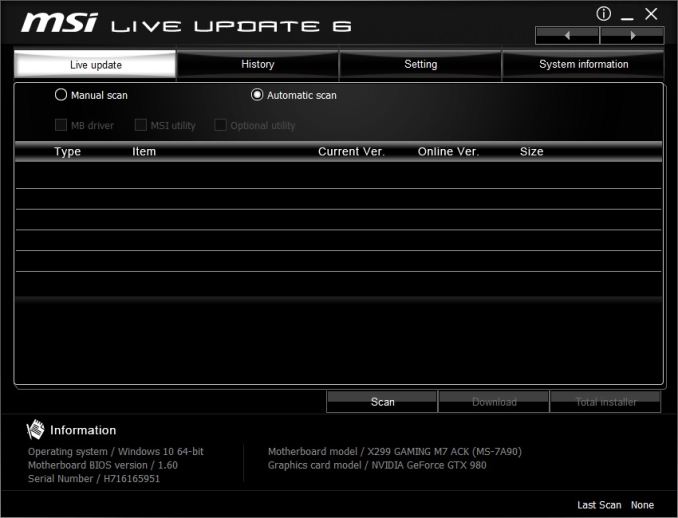
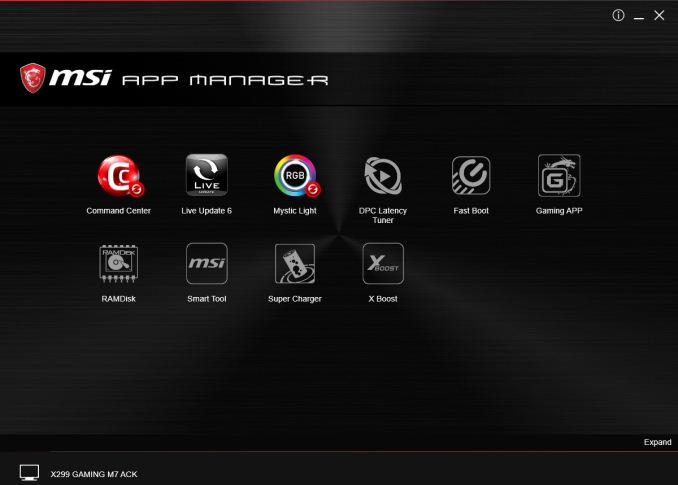
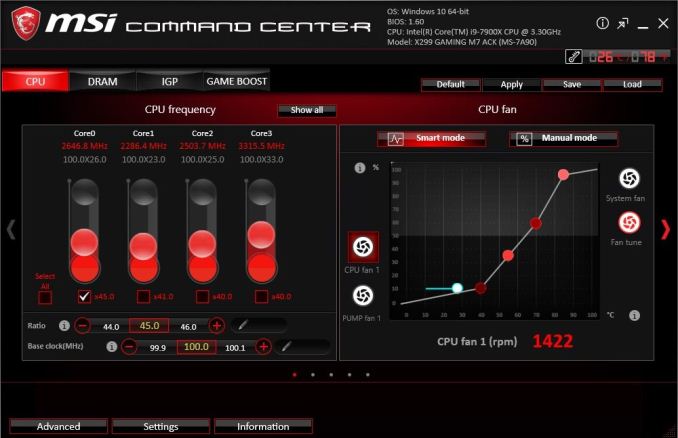

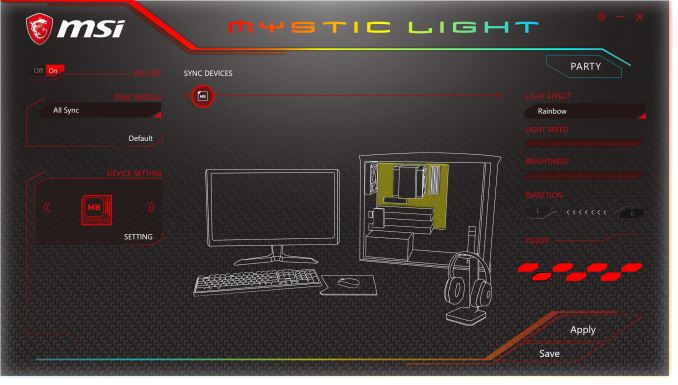
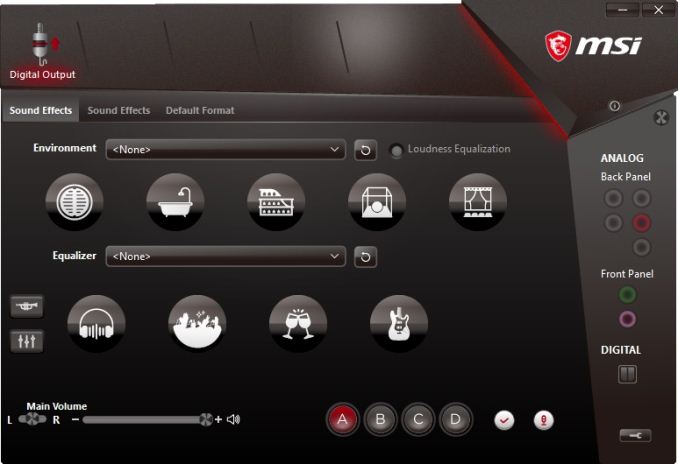
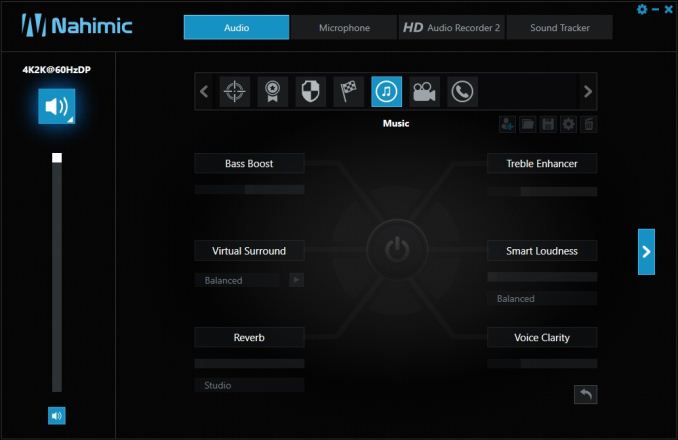














32 Comments
View All Comments
Diji1 - Wednesday, March 7, 2018 - link
>don't buy that QoS bullshit, Ian, you're not stupid, if some idiot is shittorenting on ADSL no amount of qosSo you've never used (or properly configured?) a device with QoS then I take it because if you had you wouldn't be dribbling inane stuff from your imagination like this.
karakarga - Wednesday, March 7, 2018 - link
New mainboards may start to use Doby Atmos playback with 9.1.6 output. New UHD films may soon adapt to it. Buying an amplifier is really expensive for hearing it. Computer with the help of CPU may ease it for us.PeachNCream - Monday, March 5, 2018 - link
Lots of us have a very good understanding of networking so don't discount us as lacking the knowledge necessary to make sense of what Rivet Networks says their hardware is doing with respect to packet analysis and traffic prioritization. Maybe the specific implementation is unique to Killer NICs (I'd even argue that's not the case since they're moving to Intel hardware so if there is packet prioritization happening in hardware, it'll eventually be Intel's implementation with Rivet's interface atop it to allow user configuration). It also seems preconceived (alarmingly so) to assume the readers would just pop in to make negative comments if you go through the trouble of running benchmarks. I'd like to think there's value in what Anandtech publishes which is why most of us, even those with strongly negative opinions about Killer products, are here in the first place reading articles. Some of us don't clearly articulate why we don't like something though. Instead it might come off as general loathing, but I think the feedback you're getting here is rooted in the favorable light Killer is cast in without supporting data that's further combined with negative customer experiences of past Killer NIC products. If you'd like to address that perception and remain as outwardly positive quantified data that isn't marketing material direct from the company would go a long way because claims would have the necessary backing.I do worry though, that the Killer NIC's benefits can't be realized in benchmarks. If its the case that the key selling points aren't measurable, repeatable, or demonstrable then do they really exist? Are the use cases where a Killer NIC's benefits most likely to be realized commonplace enough to begin with and if they are, what sorts of difficulties make measurement so elusive? It's hard to accept the sales pitch if there's not a trustworthy third party out there that can show they actually exist.
I understand why you'd like to consult with Rivet's personnel in the process of finding a way to measure and demonstrate what their hardware can do, but surely they already went through this trouble to get the numbers for their marketing materials that would put their product performance into bar graphs alongside other common network adapters. They've got to have invented that wheel already if they're claiming those benefits since false claims would expose the company to legal liability. It'd be odd that they're mum about it since their hardware appeals to a crowd of technically-inclined consumers that get very excited over a 2ms improvement in ping times to a game server.
nevcairiel - Tuesday, March 6, 2018 - link
>If you are gaming, plus downloading, plus streaming, plus watching youtube on another monitor etc,> the priority thing does its job.
I have my router doing proper QoS, I can download at full speed and not notice a dip in gaming. IMHO the "bottleneck" in the network needs to perform this task for good results, and thats often the gateway from ethernet to the internet.
Lolimaster - Tuesday, March 6, 2018 - link
Downloading barely affects gaming sessions (game data downloaded from an online match is small), uploading beyond a certain threshold will kill it (climbing ms+).andychow - Monday, March 5, 2018 - link
I like the presence of U.2, but killer networking + RGB LEDS = no way I'm buying that. The RGB LEDs you can probably turn off, which just wastes a little money. But killer networking is really the deal breaker. It's something most people would pay extra to not have. Why do board makers ever accept using this brand?Even when killer hardware is based on Intel (these aren't), their custom firmware and drivers is just junk.
Look online, most people that have the Killer 1535 just end up getting another wifi card.
Gothmoth - Monday, March 5, 2018 - link
no word about the bios issues... anandtech articles are now basically just a feature list with more words.Joe Shields - Wednesday, March 7, 2018 - link
What BIOS issues? I did not run into any throughout testing. Perhaps the BIOS used fixed something from previous versions? Do you have a link to said problems?timecop1818 - Monday, March 5, 2018 - link
> What happens when a vendor adds 802.11ac to Killer networking?You lose sales.
Fuck killer and fuck any vendor that uses their shit.
jjj - Monday, March 5, 2018 - link
1 year later, AT still avoids Ryzen mobos with extreme ferocity.And it gets so much worse worse, you focus on X299, a platform almost nobody buys.
Go count the mobo reviews in the last year. By my count , you got;
12 reviews for X299
6 reviews for for Z270
2 reviews for for Z370
2 reviews for X370
1 review for TR
Objectivity and serving the reader might not be this site's goal but even if your goal is to sell hardware, how is focusing on products that do not sell, serving your financial interests.
The way this makes sense, is if someone is paying you to promote x299 at any cost. Otherwise, what you are doing is insanity.